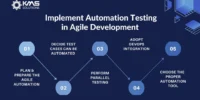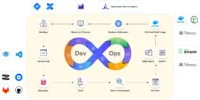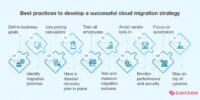Serverless architecture has transformed the way we design and deploy applications, offering scalability, cost-efficiency, and reduced operational overhead. In this guide, we’ll explore quick tips for achieving serverless success and harnessing the full potential of serverless computing. ☁️
1. Understand the Serverless Paradigm
Begin by understanding the core principles of serverless computing. Serverless doesn’t mean there are no servers; rather, it abstracts server management from the developer, allowing them to focus on code and business logic. Grasp the event-driven nature of serverless functions.
2. Choose the Right Cloud Provider
Select a cloud provider that aligns with your project’s requirements. Major cloud providers, such as AWS, Azure, and Google Cloud, offer serverless solutions. Evaluate factors like pricing, performance, and ecosystem support when making your choice.
3. Optimize Function Size and Execution Time
Break down your application logic into small, focused functions. This not only improves modularity but also allows for better resource allocation. Aim for functions with shorter execution times, as serverless platforms charge based on execution duration. ⏱️
4. Implement Cold Start Mitigation Strategies
Cold starts can impact the performance of serverless functions. Implement strategies like keeping functions warm using scheduled invocations, optimizing dependencies, and choosing the right memory allocation to mitigate cold start delays. ❄️
5. Secure Your Serverless Applications
Security is paramount in serverless architectures. Apply the principle of least privilege, secure sensitive data, and leverage built-in security features provided by your chosen serverless platform. Regularly update dependencies to patch vulnerabilities.
6. Use Managed Services for Scalability
Leverage managed services offered by your cloud provider to offload tasks like database management, authentication, and storage. This allows your team to focus on application logic while benefiting from the scalability and reliability of these managed services. ️
7. Monitoring and Logging
Implement robust monitoring and logging practices to gain insights into the performance and behavior of your serverless functions. Use tools like AWS CloudWatch, Azure Monitor, or Google Cloud Logging to track metrics, errors, and logs.
8. Automate Deployment and Testing
Embrace continuous integration and continuous deployment (CI/CD) for your serverless applications. Automate the deployment process, and include thorough testing in your pipeline to catch issues early and ensure a reliable release process.
9. Cost Optimization Strategies
Optimize costs by understanding the pricing model of your chosen cloud provider. Utilize auto-scaling features, consider reserved instances or capacity commitments, and regularly review and optimize resource usage to avoid unnecessary expenses.
10. Embrace a Serverless Mindset
Encourage a serverless mindset within your development team. Foster a culture of experimentation, rapid prototyping, and embracing serverless best practices. Stay informed about updates and new features from your cloud provider to continually optimize your serverless applications.
Conclusion
Achieving serverless success involves understanding the serverless paradigm, choosing the right cloud provider, optimizing function size and execution time, implementing cold start mitigation strategies, securing your applications, using managed services for scalability, implementing monitoring and logging, automating deployment and testing, adopting cost optimization strategies, and embracing a serverless mindset. By following these quick tips, you’ll harness the power of serverless architecture to build scalable, cost-effective, and efficient applications. Happy serverless coding! ☁️








